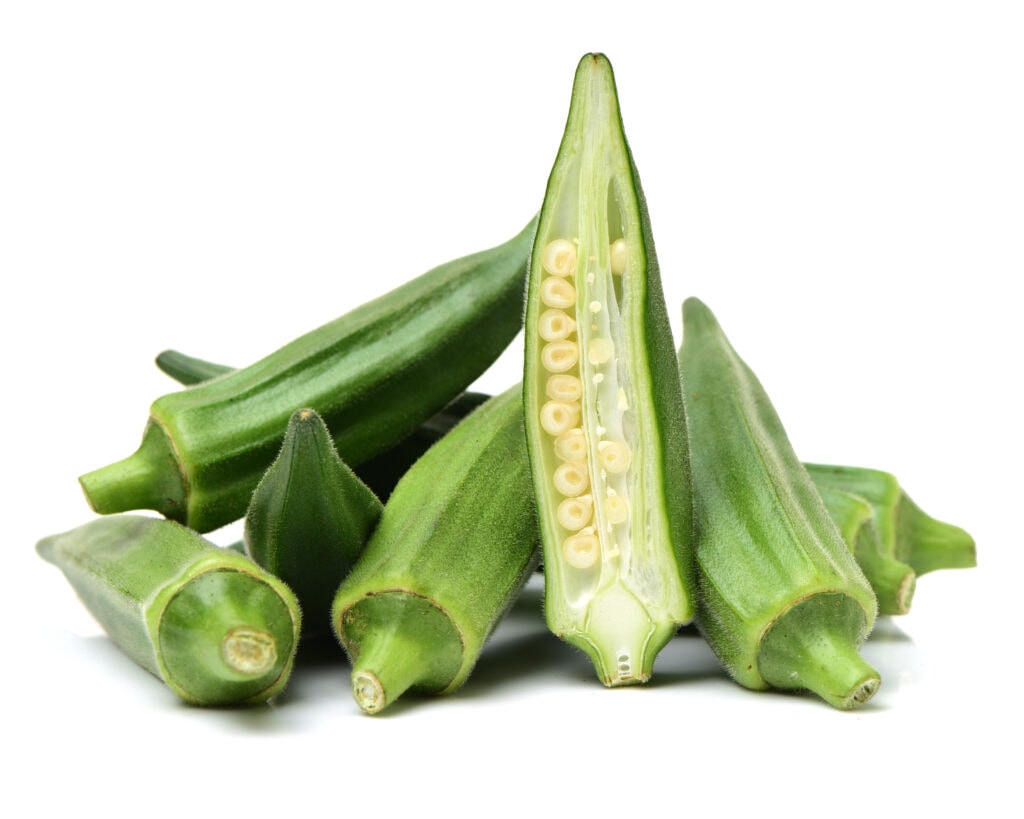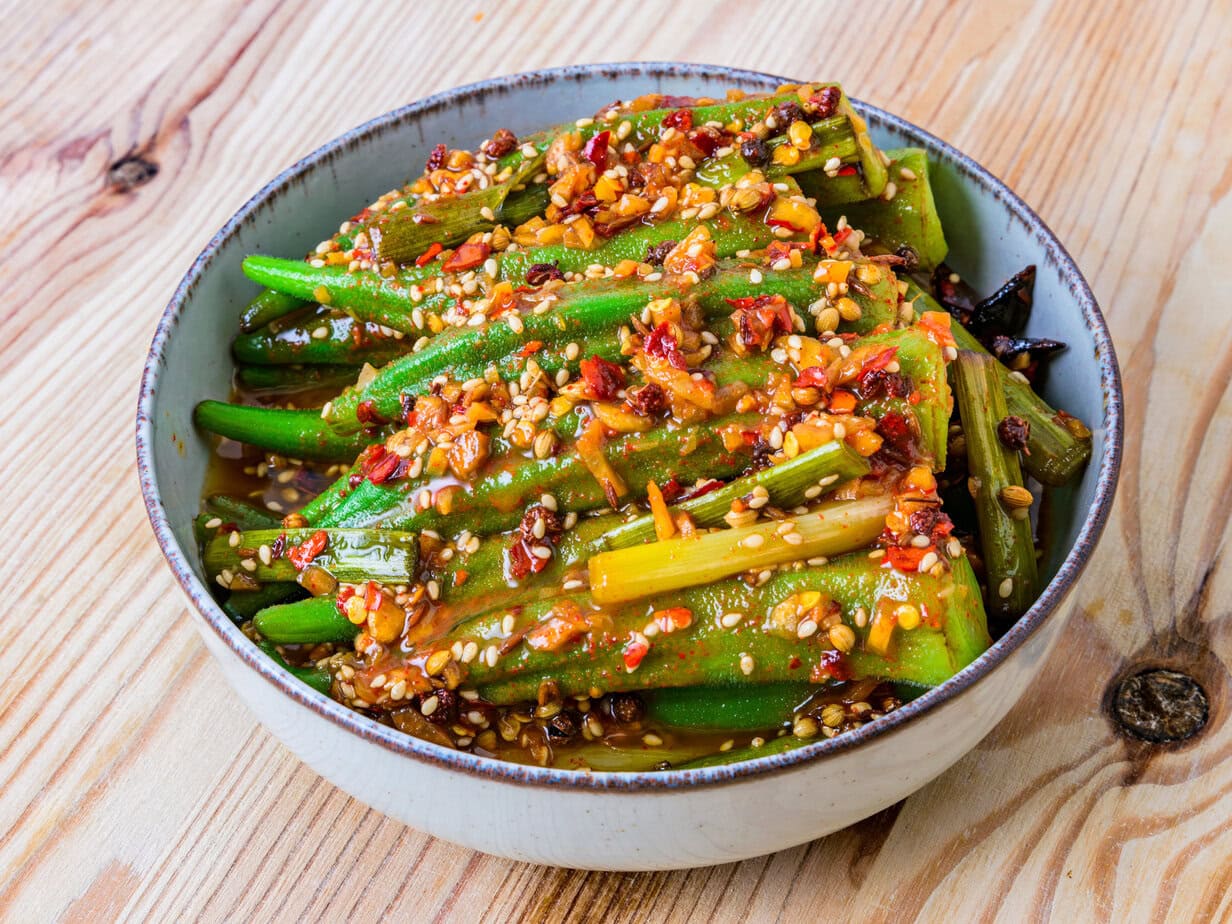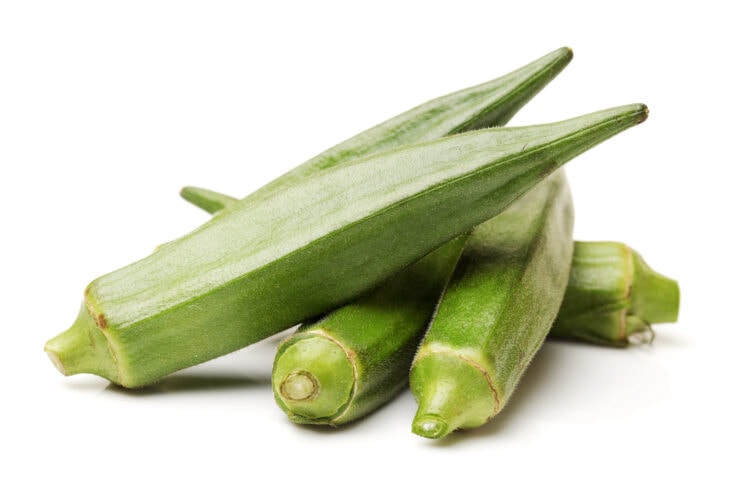Okra, often called gumbo, is a tropical flowering plant native to Ethiopia. Like many plants, the flower develops into a fruit, yet okra is usually eaten as a vegetable.
It resembles a pod filled with seeds, a bit like a bean. The Lady Finger, as it is sometimes called because of its tubular shape, thrives in hot, humid climates, which is why it is widely grown in Nigeria, Egypt, Saudi Arabia, Mexico, and Florida

Okra is common in Caribbean and Indian cooking, featuring in gumbos, stews, and more. Opinions are divided: many complain that it turns slimy when cooked, while others enjoy its silky texture.
Origins of okra
In Louisiana, okra is also known as gombo, a word that can also refer to the soups and stews made with it. Native to Africa, specifically Ethiopia, okra has a somewhat obscure history, but we know it traveled a long way from Africa to the United States.
From India to Egypt, it even reached Arabia, where it gained popularity in North Africa. Centuries later, enslaved Africans and colonists carried it to North America.
Okra in cooking
Okra is extremely easy to cook, which is one of its main advantages. You can prepare it almost any way you like, though some methods are better than others at preventing that characteristic slimy coating.
Okra contains mucilage, a natural thickener that is released when heated. While this is perfect for gumbos, cooks in the Caribbean often bread, fry, or marinate the pods to minimize the stickiness.
It’s up to you: fried, grilled, sauteed, pan-roasted Some chefs soak it in vinegar before cooking to reduce the goo. Others use very high heat, grilling or sauteing the pods. In short, there are plenty of ways to prepare it.

What does okra taste like?
Mild and herbaceousthat is the impression okra leaves. It also has a unique texture: crisp when cooked quickly, tender when braised slowly. For reference, its flavor is sometimes likened to eggplant or green beans.
The different kinds of okra
Much to the delight of fans, there are countless varieties of okra: Clemson Spineless, Annie Oakley, Baby Bubba Hybrid, Cajun Delight, Louisiana Green Velvet Yet plain green gombo is still the standard in the United States. The pods vary widely in color, size, and shape. Some are purple, while others can grow up to 2 meters tallsure to add a splash of color to your plate!
Where to buy okra?
One thing is certain: okra is not especially common, so fresh pods can be hard to find. Your best bet is a specialty grocery, though they often stock it pre-cut and frozen.
If you do find fresh okra, choose pods that feel firm but not rock-hard, with vibrant green skin. They are easiest to find from May to September. In the United States, stores usually sell fresh gombo by the pound during the summer when it is in season; prices rise in winter when it is imported.
How to store okra?
Well wrapped, okra will keep for up to 4 days in the refrigerator. When you’re ready to cook, let it reach room temperature first. For longer storage, freeze it for up to a year. I suggest washing and trimming the stems, blanching the pods in boiling water, shocking them in ice water, chopping, and then sealing them in freezer bags.

